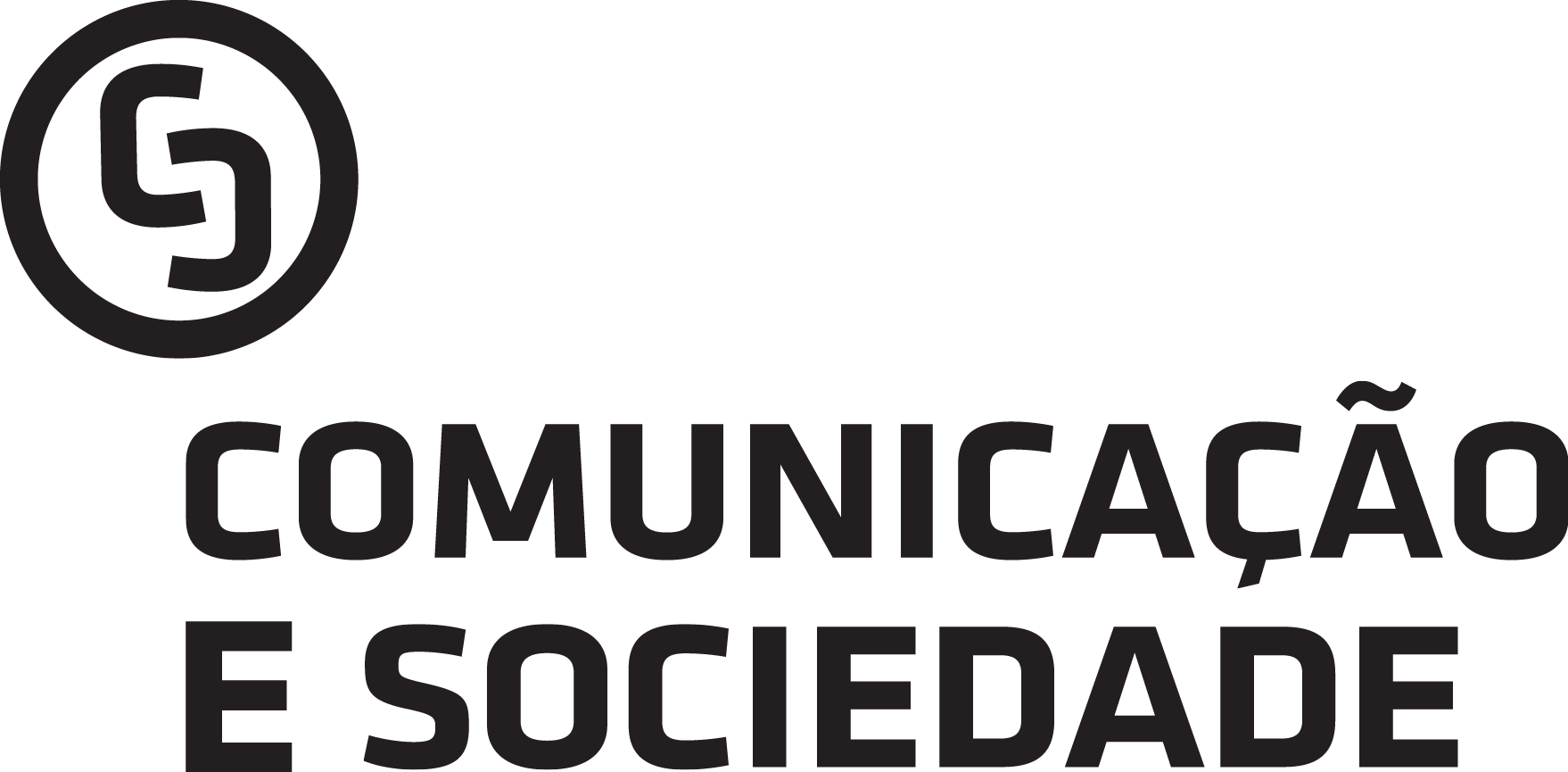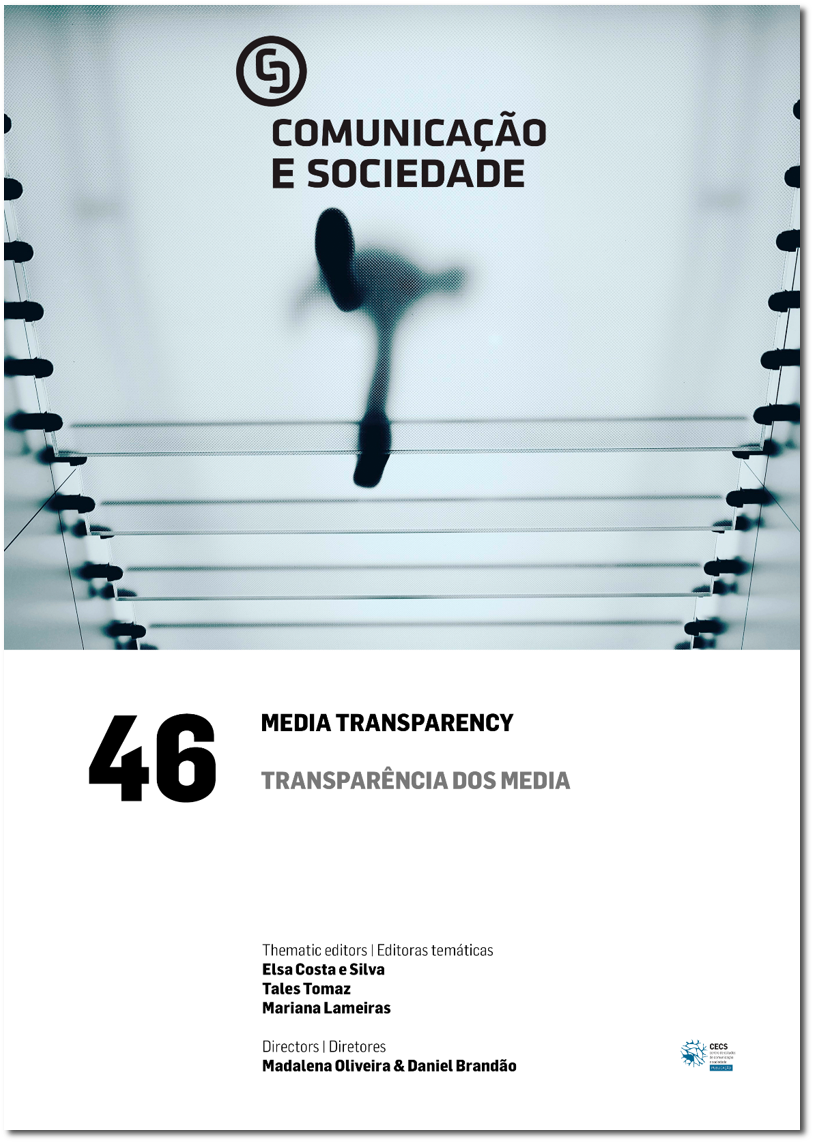Towards Responsible Media: Understanding the Baltic Countries’ Traits Through the Lens of Transparency and Accountability Analysis
DOI:
https://doi.org/10.17231/comsoc.46(2024).5693Keywords:
transparency of media ownership, media market accountability, media regulation and self-regulation, Baltic countries, culture of responsibilityAbstract
This paper explores the idea of a “responsible media environment” through the lens of media organisations’ ownership characteristics. It highlights the significance of “transparency in media ownership” and connects it to the concept of “media market accountability”. As a case example, it looks at the three Baltic countries by assessing how the normative ideal of transparency of media ownership is exercised at the level of media organisations in Estonia, Latvia, and Lithuania. Building on the methodological and theoretical framework of news media monitoring (Trappel & Tomaz, 2022), which highlights the essence of ownership transparency as a valid opportunity to assess the accountability of media organisations, the paper analyses how responsible and open relationships with the audience are fostered in markets defined by specific traditions and structural features, such as their small size. The example of the Baltic countries shows that the small size of the media market leads to a greater reliance on “informal” aspects in relationships regarding media ownership transparency. However, the same element of “informality” contributes to the apparent deficiency and risk identified in the media accountability perspective, which affects expressions of media ownership power, for example, via editorial interventions. As explained, contextual historical factors determine the result, as the rapid transition from socialism to capitalism in these countries in the early 1990s prevented the development of a culture of responsibility among media organisations. Even today, the lack of market accountability instruments in the Baltic media market contributes to the risk that the agenda of media owners primarily determines responsibilities, editorial independence, and media performance.
Downloads
References
Archer, M. (2003). Structure, agency and the internal conversation. Cambridge University Press. DOI: https://doi.org/10.1017/CBO9781139087315
Bajomi-Lazar, P. (2015). Party colonisation of the media in Central and Eastern Europe. European Journal of Communication, 30(4), 504–504. https://doi.org/10.1177/0267323115594282 DOI: https://doi.org/10.1177/0267323115594282
Balčytienė, A. (2012). Culture as a guide in theoretical explorations of Baltic media. In D. Hallin, & P. Mancini (Eds.), Comparing media systems beyond the Western world (pp. 51–72). Cambridge University Press. DOI: https://doi.org/10.1017/CBO9781139005098.005
Balčytienė, A. (2015). Institutions and cultures: An analytical framework for the study of democratization and media transformations in Central and Eastern Europe. In B. Dobek-Ostrowska, & M. Głowacki (Eds.), Democracy and media in Central and Eastern Europe 25 years on (pp. 47–52). Peter Lang Publishers.
Balčytienė, A., Bajomi-Lázár, P., Štětka, V., & Sükösd, M. Á. (2015). Oligarchization, de-Westernization and vulnerability: Media between democracy and authoritarianism in Central and Eastern Europe. Tidsskrift for Medier, Erkendelse og Formidling, 3(1), 119–141.
Balčytienė, A., & Jastramskis, D. (2022). Country report: Lithuania. Euromedia Ownership Monitor. https://media-ownership.eu/findings/countries/lithuania/
Balčytienė, A., & Malling, M. (2019). Lithuania: Media-politics interaction shaped by benefits-oriented reasoning. In K. M. Johansson, & G. Nygren (Eds.), Close and distant: Political execute-media relations in four countries (pp. 55–74). Nordicom.
Balčytienė, A., & Morring, T. (2019). Variations in political communication culture: New forms of political parallelisms and media-politics coalitions. In K. M. Johansson, & G. Nygren (Eds.), Close and distant: Political execute-media relations in four countries (pp. 221–243). Nordicom.
Balčytienė, A., Bocullo, D., & Juraitė, K. (2024). Baltic democracies beyond the EU accession: Media as a bearer of democratic culture and means of resilience in navigating uncertainties. Journal of Contemporary European Studies, 1–16. https://doi.org/10.1080/14782804.2024.2360030 DOI: https://doi.org/10.1080/14782804.2024.2360030
Ball, C. (2009). What is transparency? Public Integrity, 11(4), 293–307. DOI: https://doi.org/10.2753/PIN1099-9922110400
Brogi, E. (2020). The media pluralism monitor: Conceptualizing media pluralism for the online environment. Profesional de la Información, 29(5), e290529. https://doi.org/10.3145/epi.2020.sep.29 DOI: https://doi.org/10.3145/epi.2020.sep.29
Bucholtz, J. (2019). “It has to be in one’s head and heart”: The understanding of journalism ethics in Latvian media. Journalism Studies, 21, 370–387. https://doi.org/10.1080/1461670X.2019.1664316 DOI: https://doi.org/10.1080/1461670X.2019.1664316
Centre for Media Pluralism and Freedom. (2024). Media pluralism monitor. https://cmpf.eui.eu/media-pluralism-monitor/
Craufurd Smith, R., Klimkiewicz, B., & Ostling, A. (2021). Media ownership transparency in Europe: Closing the gap between European aspiration and domestic reality. European Journal of Communication, 36(6), 547–562. https://doi.org/10.1177/0267323121999523 DOI: https://doi.org/10.1177/0267323121999523
Dimants, A. (2018). Latvia: Different journalistic cultures and different accountability within one media system. In T. Eberwein, S. Fengler, & M. Karmasin (Eds.), The European handbook of media accountability (pp. 143–149). Routledge. DOI: https://doi.org/10.4324/9781315616353-18
Dimants, A. (2022). Latvijas prese 200 gados no “Latviešu Avīzēm” līdz digitālo mediju laikmetam. Latvijas Mediji.
Dragiļeva, O. (2024, October 31). Izdevēja uz parāda. Kas ir “Neatkarīgās” īpašniece Anastasija Udalova? Re:Baltica. https://rebaltica.lv/2024/10/izdeveja-uz-parada-kas-ir-neatkarigas-ipasniece-anastasija-udalova/
Euromedia Ownership Monitor. (2022). Methodology. https://media-ownership.eu/about/methodology/
Euromedia Ownership Monitor. (2023). Countries. https://media-ownership.eu/findings/countries/
Gerli, M., Mazzoni, M., & Mincigrucci, R. (2018). Constraints and limitations of investigative journalism in Hungary, Italy, Latvia and Romania. European Journal of Communication, 33(1), 22–36. https://doi.org/10.1177/0267323117750672 DOI: https://doi.org/10.1177/0267323117750672
Hallin, D. C., & Mancini, P. (2004). Comparing media systems: Three models of media and politics. Cambridge University Press. https://doi.org/10.1017/CBO9780511790867 DOI: https://doi.org/10.1017/CBO9780511790867
Harro-Loit, H. (2024). Risks to the capability of monitoring mediascapes across Europe. In E. Lauk, M. O. Alonso, & H. Harro-Loit (Eds.), Monitoring mediascapes. A promise of wisdom-based EU media governance (pp. 188–211). University of Tartu.
Horowitz, M., & Balčytienė, A. (2023). How to assess national resilience to online disinformation? Comparing Finland and Lithuania. DIGIRES/NORDIS.
Įstatymas Nr. 0961010ISTA00I-1418, Valstybės žinios, 1996-07-26, Nr. 71-1706. (1996). https://www.e-tar.lt/portal/lt/legalAct/TAR.065AB8483E1E/iwMSHuhcYO
Jastramskis, D., Rožukalne, A., & Jõesaar, A. (2017). Media concentration in the Baltic states (2000–2014). INFORMACIJOS MOKSLAI, 77, 26–48. https://doi.org/10.15388/Im.2017.77.10705 DOI: https://doi.org/10.15388/Im.2017.77.10705
Kantar. (n.d.). „Kantar“ reklamos tyrimas: šiais metais reklamos rinka augs 5,2 proc. Retrieved October 28, 2024, from https://www.kantar.lt/lt/news/-kantar-reklamos-tyrimas-siais-metais-reklamos-rinka-augs-5%2C2-proc-/
Klimkiewicz, B. (2019). Pluralism in a hybrid media environment from the user perspective. CMPF.
Kõuts-Klemm, R., Rožukalne, A., & Jastramskis, D. (2022). Resilience of national media systems: Baltic media in the global network environment. Journal of Baltic Studies, 53(4), 543–564. https://doi.org/10.1080/01629778.2022.2103162 DOI: https://doi.org/10.1080/01629778.2022.2103162
Kreutler, M., Eberwein, T., Fengler, S., Głowacki, M., Mikucki, J., Rožukalne,A., & Velinova, N. (2024). Media accountability and its contribution to deliberative communication: Recent trends and current practices. In Z. Peruško, E. Lauk, & H. Harro-Loit (Eds.), European media systems for deliberative communication: risks and opportunities. Routledge studies in media, communication, and politics (pp. 45–63). Routledge. DOI: https://doi.org/10.4324/9781003476597-4
Krūtaine, A., & Tetarenko-Supe, A. (Eds.). (2024). Will there be calm after recent storms? What lies ahead for the Baltic media. Anne-Marie and Gustaf Ander Centre for Media Studies at SSE Riga.
Latvijas Vēstnesis. (2000, April 13). Komerclikums. https://likumi.lv/ta/id/5490-komerclikums
Latvijas Vēstnesis. (2008, July 30). Law on the Prevention of Money Laundering and Terrorism and Proliferation Financing. https://likumi.lv/ta/en/en/id/178987-law-on-the-prevention-of-money-laundering-and-terrorism-and-proliferation-financing
Latvijas Vēstnesis. (2023, July 1). Akciju sabiedrību īpašnieku struktūra kļūst caurskatāma. https://lvportals.lv/skaidrojumi/353073-akciju-sabiedribu-ipasnieku-struktura-klust-caurskatama-2023
Latvian Advertising Association. (2024, February 26). LRA publicē Latvijas mediju reklāmas tirgus apjomu 2023. Gadā. https://www.lra.lv/webroot/file/uploads/files/2023.%20gada_Latvijas_mediju_%20reklamas_tirgus_dati_26022024.pdf
Leitāns, I. (2023, March 12). “Mediju nama” jaunajai īpašniecei Udalovai piedāvāts pārpirkt arī “Dienas mediju” parādsaistības. De facto. https://www.lsm.lv/raksts/zinas/ekonomika/12.03.2023-mediju-nama-jaunajai-ipasniecei-udalovai-piedavats-parpirkt-ari-dienas-mediju-paradsaistibas.a500463/
Mediadelcom. (2022). Approaching deliberative communication: Studies on monitoring capability and on critical junctures of media development in 14 EU countries. CS1, D-2.1. https://www.mediadelcom.eu/publications/d21-case-study-1/
Mediadelcom. (2024). Recommendations for media governance. Policy brief providing recommendations for media governance. https://www.mediadelcom.eu/publications/d55-recommendations/
Örnebring, H. (2012). Clientelism, elites, and the media in Central and Eastern Europe. The International Journal of Press/Politics, 17(4), 497–515. https://doi.org/10.1177/1940161212454329 DOI: https://doi.org/10.1177/1940161212454329
Peruško, Z., Harro-Loit, H., & Lauk, E. (2024). Introduction. In Z. Peruško, E. Lauk, & H. Harro-Loit (Eds.), European media systems for deliberative communication: Risks and opportunities. Routledge studies in media, communication, and politics (pp. 1–12). Routledge. DOI: https://doi.org/10.4324/9781003476597-1
Pickard, V. (2015). Media ownership. In The International encyclopedia of political communication (pp. 1–4). John Wiley & Sons. https://doi.org/10.1002/9781118541555.wbiepc206 DOI: https://doi.org/10.1002/9781118541555.wbiepc206
Potter, A. (2021). Re-visiting Tom O’Regan’s Australian television culture: Why media ownership, regulation and policy still matter. Media International Australia, 180(1), 17–23. https://doi.org/10.1177/1329878X211010782 DOI: https://doi.org/10.1177/1329878X211010782
Rožukalne, A. (2013). Latvia’s media owners. A monograph on Latvia’s media system and the most important owners thereof. Zinātne.
Rožukalne, A., & Ozoliņa, L. (2023). Latvia. Country report 2023. Euromedia Ownership Monitor. https://media-ownership.eu/findings/countries/latvia/
Stetka, V. (2012). From multinationals to business tycoons: Media ownership and journalistic Autonomy in Central and Eastern Europe. The International Journal of Press/Politics, 17(4), 433–456. https://doi.org/10.1177/1940161212452449 DOI: https://doi.org/10.1177/1940161212452449
Štětka, V., & Mihelj, S. (2024). The Illiberal public sphere: Media in polarized societies. Palgrave Macmillan. DOI: https://doi.org/10.1007/978-3-031-54489-7
Tomaz, T. (2024). Media ownership and control in Europe: A multidimensional approach. European Journal of Communication, 39(5), 498-511. https://doi.org/10.1177/02673231241270994 DOI: https://doi.org/10.1177/02673231241270994
Trappel, J., & Tomaz, T. (2022). Democracy at stake: On the need of news media monitoring. In J. Trappel, & T. Tomaz (Eds.), Success and failure in news media performance: Comparative analysis in the Media for Democracy Monitor 2021 (pp. 11–31). Nordicom; University of Gothenburg. https://doi.org/10.48335/9789188855589-11
Veskimägi, M. (2024, May 6). Tagasivaade 2023. aasta reklaamiturule: Enim kasvas välimeedia ja enim langes ajakirjade osakaal. KantarEmor. Retrieved October 16, 2024, from https://www.kantaremor.ee/blogi/tagasivaade-2023-aasta-reklaamiturule-enim-kasvas-valireklaami-ja-enim-langes-ajakirjade-osakaal/
Voltmer, K., Selvik, K., & Høigilt, J. (2021). Hybrid media and hybrid politics: Contesting informational uncertainty in Lebanon and Tunisia. The International Journal of Press/Politics, 26(4), 842–860. https://doi.org/10.1177/1940161221999266 DOI: https://doi.org/10.1177/1940161221999266
Downloads
Published
How to Cite
Issue
Section
License
Copyright (c) 2024 Anda Rožukalne, Auksė Balčytienė, Halliki Harro-Loit

This work is licensed under a Creative Commons Attribution 4.0 International License.
Authors own the copyright, providing the journal with the right of first publication. The work is licensed under a Creative Commons Attribution 4.0 International License.












